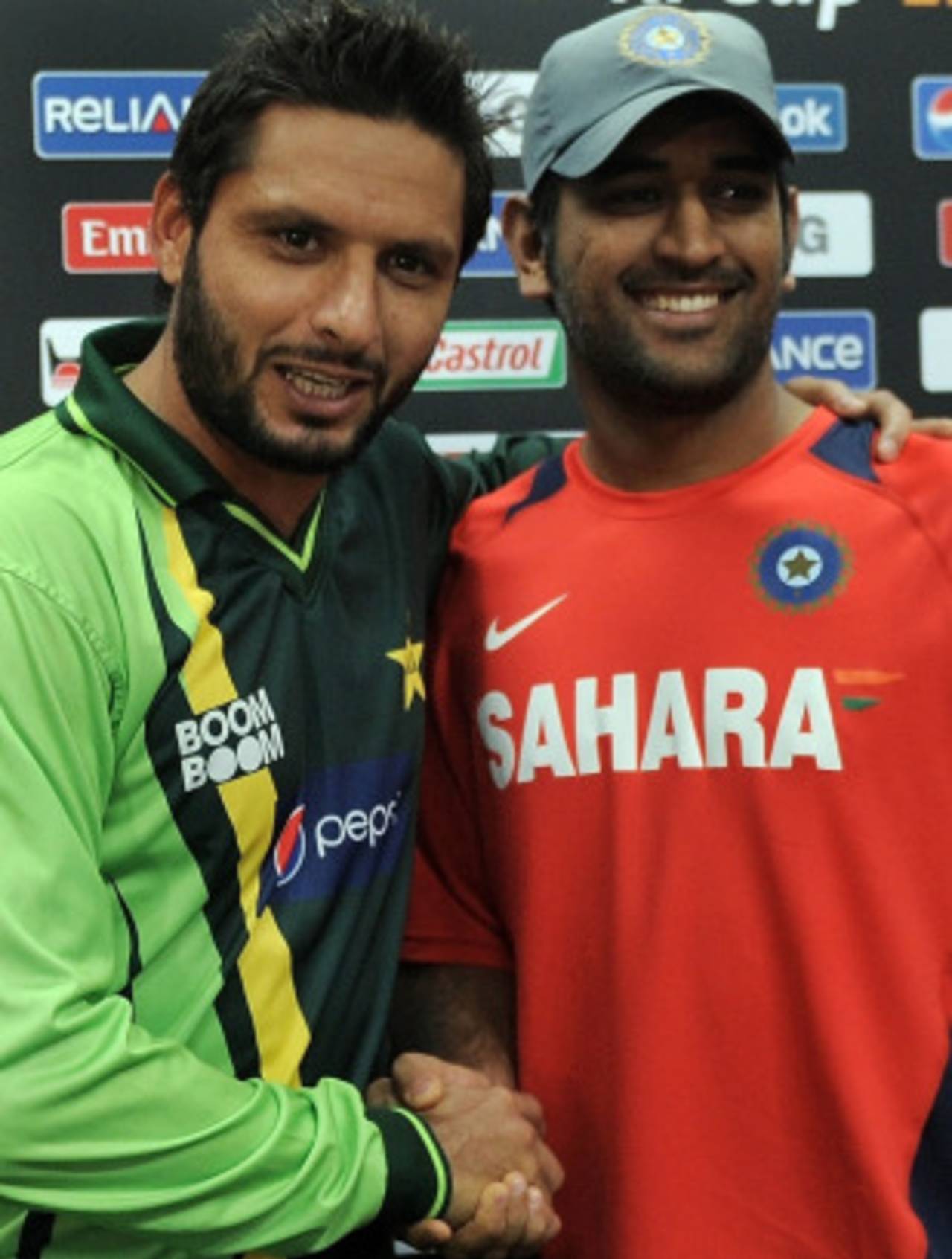An India-Pakistan semi-final [in a World Cup] has never happened before and is unlikely to happen again for at least another generation. On the basis of rarity alone, therefore, this would be an encounter to cherish. But the matter goes well beyond the obvious.
Sports ultimately are a form of make-believe, but here we have a sporting rivalry with roots so deep that it is no longer clear which is the genuine conflict and which is the proxy. If you took a survey of Indians and Pakistanis today, they will not be clear whether it is more important to
defeat your neighbour in cricket or war. Quite likely, a majority will prefer victory in cricket. To this extent, the goal of any cricket diplomacy has already been achieved.
Both teams have their raw sporting assets, but everybody knows this is a contest that is going to be won or lost in the head. Pakistan is a team that in recent times has been punched in the face, kicked in the ribs, slapped around, and spat upon which means they now have almost nothing to lose. This gives them an edge in fearlessness. India, on the other hand, are riding a tidal wave of support and popularity, which means they have already secured the upper hand. This gives them an edge in confidence.
In terms of skill and tactics, you could not have asked for a more tantalising contrast. Indian and Pakistani cricket traditions are products of the same soil, but over the decades, India became a nation of great batsmen while Pakistan became a nation of great bowlers. How and why this happened is a mystery, although theories abound and the topic is a staple of Asian cricket discussions.
In this tournament alone, Pakistani bowlers restricted Australia to 176 and West Indies to 112, when the same teams racked up an additional 70-80 runs each against Indian bowlers. Moreover, the combined economy rate of Pakistan's four most economical bowlers is 3.57 runs per over, while for India the corresponding figure is nearly an extra run per over higher at 4.53. To drive this point home, Indians have bowled only 7 maidens in the tournament thus far while Pakistanis have bowled 24.
On the batting side, Pakistan have crossed 300 only once so far, and that too against Kenya, when India have exceeded 300 against two Test sides (England and Bangladesh) and very nearly did it against a third (South Africa). Moreover, Pakistan has yet to record a century in this tournament, while India has already notched up five. Perhaps most impressively, the strike rate of India's top four run-getters ranges from 86 to 121, while for Pakistan the corresponding range is a clear rung slower at 73 to 84.
What we have coming up in Mohali, therefore, is in some ways the ultimate cricket contest: a side that knows the craft of delivering a ball pitting its wits against an outfit that knows it way with a bat; in a knockout encounter where the context is influenced by history, culture, politics, and God knows what else; and whose stakes circumstances have pushed impossibly high.
India have a perfect 4-0 record against Pakistan in World Cup matches, but in the 2011 edition Pakistan have thus far enjoyed a better run, topping their group with five wins, while India came second in their group with four wins and a tie. Even against Australia and West Indies, the two sides in this competition that India and Pakistan have both faced, Pakistan's wins were by bigger margins than India's. Despite these differences, Pakistan are the underdogs for Mohali. This may irk their fans, who are craving momentum and hype, but it probably suits the team just fine.
Meanwhile, the atmosphere in Pakistan is tense and anxious. A cardiologist friend of mine says the stress of unblocking coronary arteries in the middle of someone's heart attack is nothing compared with the anxiety he is feeling in the build-up to Mohali. A neurosurgeon friend, whose professional work requires opening skulls to repair diseased brains, made a similar observation. Even people who’ve never paid much attention to cricket are reporting butterflies in the stomach. They may sound silly and frivolous to an outsider, but many Indians and Pakistanis will identify with these confessions.
Coming into the semi-final, Pakistan have skilfully negotiated several challenging hurdles. Handicapped by an ineffective opening pair, an unreliable wicket-keeper, and the absence of their two best seamers, they have made the most of the hand that was dealt. A grand treasure beckons in the distance, but Afridi and his men find themselves separated from it by impossibly treacherous terrain. They are in a zone where the tactical guide goes out the window and survival instincts must take over. Many people are saying it doesn’t get better than this in cricket, but it could be persuasively argued that it doesn’t get better, period.
Saad Shafqat is a writer based in Karachi
